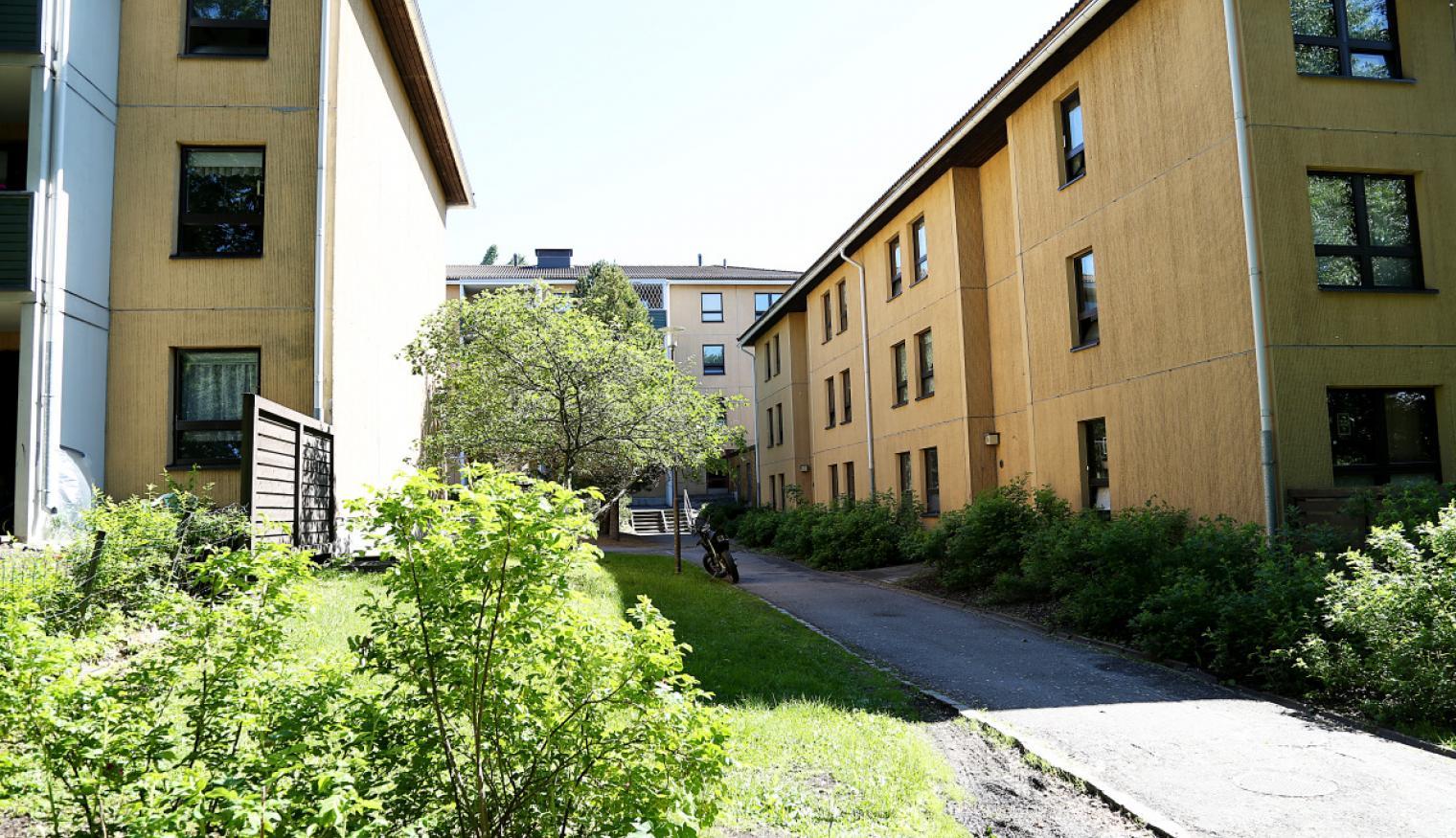
Malmilla sijaitseva asuintalo oli toinen vertailuun valituista kohteista.
One of the residential buildings selected for comparison is in Malmi.
ATT, Helsinki’s housing production, commissioned a review on the carbon footprints and costs of renovating two old rental blocks of flats. The options included renovating the old buildings and adding new floors or demolishing the buildings and constructing new ones in their place.
Making repairs was cheaper and more climate-friendly
At both sites, the carbon footprint of the renovation and adding new floors was over 20 per cent smaller in comparison to demolishing the buildings and constructing new ones in their place. The impact was assessed over a period of 50 years.
The renovation and the expansion also required somewhat lower investments when compared to the construction of new blocks of flats.
The review shows that energy efficiency and the choice of building materials and heating method have a significant effect on buildings’ carbon footprints, both when making repairs or constructing new buildings. The proportion of transport and demolition work was relatively small.
In the renovation option, energy efficiency accounts for a significant proportion of the carbon footprint, approximately 70 per cent, while with new builds the figure is roughly 50 per cent. The aim of renovation construction is not to return a property to its original state, but to integrate it with modern energy-efficient building services engineering.
‘The results are only indicative, because they are largely based on assumptions and not on actual plans. We intend to invite specific operators to a competition for ideas on the added floors option,’ says Developer Architect Timo Karhu from ATT. ‘After that, we will have more precise estimates on the costs and carbon footprints. We can also use the competition results as a starting point, if the building extension project is launched.’
The review commissioned by ATT deals with a current issue, because land use in many Finnish cities is being made more efficient and the urban structure more compact through urban infill, by demolishing old buildings and constructing new ones.
‘Demolishing old suburban blocks of flats to make room for new buildings may not be the most prudent approach in terms of sustainable development and the climate. This is something that needs to be studied in more depth,’ says Karhu.
Replacing concrete with wood reduces emissions
Building products, concrete materials in particular, are a significant source of greenhouse gas emissions, especially when constructing new buildings. If emissions are assessed without taking energy consumption into account, the carbon footprint of renovations and expansions is about half the size when compared to new builds.
The carbon footprint of both renovations and new constructions can be made smaller by replacing concrete-based products with wood-based ones. For example, it may be possible to use wood when adding floors to residential buildings that are under renovation. The use of a recyclable binding agent with concrete products during a renovation reduced the carbon footprint by 4–5 per cent.
Buildings’ carbon footprint can be significantly reduced by changing from district heating to geothermal energy. In the new-construction option, changing the heating method reduced the carbon footprint by about 34–37 per cent over a period of 50 years. The impact of changing the heating method was not calculated for the renovation option during the review, but it is assumed to reduce the carbon footprint.
Buildings’ carbon footprint to become part of legislative steering
The One Click LCA calculation software by Bionova was used to make the assessment. The method’s testing is part of the low-carbon construction roadmap, published in 2017 by the Ministry of the Environment, which aims to make the carbon footprint of buildings part of legislative steering.
According to the 2019 government agenda, the implementation of the roadmap must be accelerated. The goal is to have the legislative steering up and running by the mid-2020s.
Senior Specialist Matti Kuittinen from the Ministry of the Environment thinks that Helsinki’s results are interesting.
‘It is very important to make comparisons between the climate effects of renovations and new constructions. ‘The maintaining of existing buildings that can still be renovated is environmentally smart. The results from ATT’s review will also provide useful background information for other constructors and cities,’ says Kuittinen.
The review was commissioned by Helsinki’s housing production ATT and conducted by SWECO.
Text: Ulla Ala-Ketola
